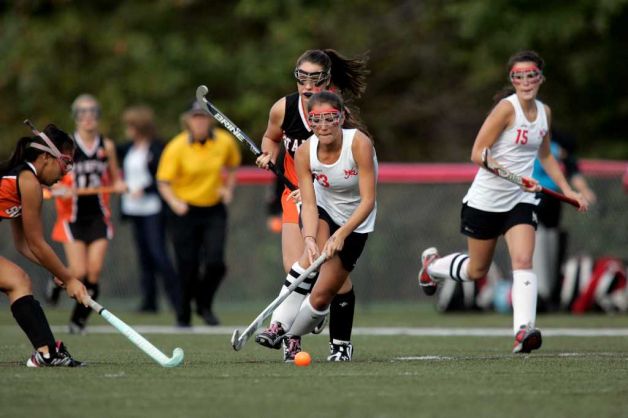Every parent watching his or her daughter play sports at some point may say, "I wish I had [fill in blank] when I was a kid." The mistakes of the parents become the nagging voice in every child's ear. "Stand up straight" or perhaps, "Do you stretching exercises," and finally, "I told you if you did too much you would get hurt." 
But as every parent knows, when you were a child perhaps you didn't listen to your parents, or what other adults said, all that well either. Even parents who enjoyed successful sports careers, with all the know-how that presumably came with that success, may have trouble convincing their talented daughter to listen to their advice.
Dr. Miho Tanaka, associate physician for the St. Louis Cardinals and Director of the Women's Sports Medicine Initiative, has experienced sports on both sides of the fence. Today, she is orthopedic surgeon, but before she became a doctor, she was a triple jump champion and record-holder in high school track in Iowa.
So what does advice does Dr. Tanaka have for female athletes in order to get the most out of their athletic ability? Here's her list of Top Five tips:
1. Eat right
In a world full of fast food and microwaved meals, the on-the-go athlete has trouble maintaining proper nutrition. But particular to female athletes, weight control is often a major concern. "Many female athletes focus on weight loss as a way to improve their performance," says Dr. Tanaka, "but they should be cautious of their nutritional intake as well as their caloric intake, to minimize any detrimental effects during this process."
Ensuring that your athlete has the proper balance of weight control, caloric intake, and micronutrients is critical to keeping the engine running smoothly.
2. Follow a well-rounded strength program
"While training, it's easy to focus on the obvious muscles that we need to improve our game," notes Dr. Tanaka. "What athletes often don't realize is that there are many muscles that support the function of the respective body part needed for a sport."
Training programs that focus entirely on particular muscles or movements do not train the entire athlete. While perhaps 10 sets of a leg press will improve power and trigger muscle growth, a weak core unable to support these strong muscles may put the athlete at risk for injury
3. Learn proper technique
"Using proper technique and form," says Dr. Tanaka, "in all aspects of a given sport, minimizes placing inappropriate amounts of stress on the surrounding structures used in the sport. This minimizes the chance of injury. "
Remember, the purpose of sports conditioning is to prepare for sports competition, not to just lift as much weight as possible. Training programs that utilize proper technique maximize the body's potential while minimizing risk of injury. Focusing too much on pumping out "1 more rep" at the cost of form is putting the body at unnecessary risk.
4. Train smarter, not just harder
"Training is not just about going at 110% all the time," says Dr. Tanaka. "The best athletes have an intricate training program that allows for the appropriate pace that allows for progression that doesn't lead to injury, as well as ensuring that they will be at their peak performance at the most critical time in their season. "
With so much emphasis placed on today's 24/7 efficiency training is critical. More is not necessarily better if is compromises general health or leaves the athlete too exhausted to perform at optimal levels.
5. Address chronic fatigue or pain
"It very common in competitive athletes to 'push through the pain' for their sport. This is not necessarily a good thing," says Dr. Tanaka. "Athletes should be smart about taking appropriate breaks to recharge, as well as maintaining appropriate conditioning and endurance that is specific to techniques in their respective sports."
Just like driving a car without changing the oil or traveling with flat tires, athletes who are breaking down need the maintenance of rest. It is important to address chronic fatigue before it progresses into more serious conditions, such as stress fractures.
Dr. Cronin gratefully acknowledges the assistance of Miho J. Tanaka, MD, Director of Women's Sports Initiative at Regeneration Orthopedics and Associate Team Physician for the St. Louis Cardinals, in the preparation of this article.
Posted September 23, 2013








